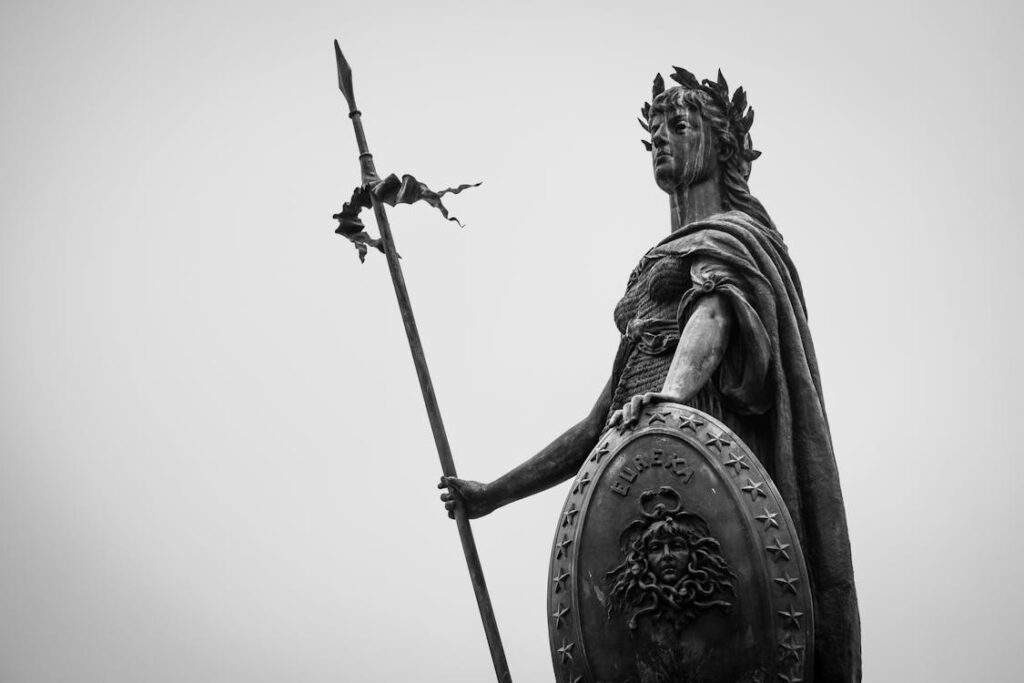Flowers have long been more than mere decorations; they’ve been storytellers, carrying with them tales of love, transformation, and mystery. Across cultures and centuries, these blooming beauties have been woven into the fabric of myths and legends, each story adding depth to their petals. Let’s embark on a journey through some of these enchanting floral narratives.
Anemones: Tears of Love and Loss
In Greek mythology, the anemone is deeply tied to the tale of Aphrodite and Adonis. Adonis, a mortal of remarkable beauty, captured the heart of Aphrodite, the goddess of love. Tragically, Adonis met his end from a wild boar’s attack. Overcome with grief, Aphrodite’s tears mingled with his blood, giving rise to the delicate anemone flower. This poignant origin story has led to the anemone symbolising both the fleeting nature of life and the enduring essence of love.
Hyacinths: A Tale of Friendship and Transformation
The hyacinth’s origin is rooted in a story of companionship and metamorphosis. Hyacinthus, a Spartan prince, was a beloved friend of Apollo, the sun god. During a friendly discus competition, a tragic accident led to Hyacinthus’s death. In his sorrow, Apollo transformed his friend’s spilt blood into the hyacinth flower, ensuring that Hyacinthus’s memory would live on with each bloom.
Narcissus: The Dangers of Vanity
The daffodil, or narcissus, carries a cautionary tale about self-obsession. Narcissus, known for his striking beauty, became entranced by his own reflection in a pool of water. Unable to tear himself away, he eventually transformed into the narcissus flower. This myth serves as a reminder of the perils of vanity and has cemented the daffodil’s association with unrequited love and self-admiration.
Sunflowers: Devotion Following the Sun
The sunflower’s cheerful visage is linked to a tale of unyielding devotion. Clytie, a water nymph, was deeply in love with Apollo. Despite her affection, Apollo did not return her love. Heartbroken, Clytie sat for days, watching Apollo traverse the sky in his sun chariot. Moved by her unwavering dedication, she transformed into a sunflower, forever turning her face to follow the sun’s path.
Peonies: Symbols of Bashfulness and Healing
Peonies, with their lush petals, have dual myths surrounding their origin. One tale speaks of Paeon, a physician to the gods, who used a peony root to heal Pluto. This act sparked jealousy in his teacher, Asclepius, leading Zeus to transform Paeon into a peony to protect him. Another story tells of the nymph Paeonia, who, after catching Apollo’s eye and incurring Aphrodite’s jealousy, was turned into a peony. These stories contribute to the peony’s symbolism of bashfulness and its historical use in healing practices.
Chrysanthemums: The Quest for Immortality
In Chinese folklore, chrysanthemums are linked to tales of longevity and immortality. One legend tells of an emperor who learned of a magical chrysanthemum growing on a distant island. This flower was believed to hold the secret to eternal life. However, only those with pure hearts could harvest it, highlighting the virtue associated with this bloom.
Roses: Emblems of Love and Beauty
Roses have been cherished across cultures as symbols of love and beauty. In Roman mythology, the goddess Flora transformed her beloved, who had died, into a rose, making it an emblem of immortal love. The layers of petals in a rose are often seen as representing the complexities and depths of love, with thorns reminding us of love’s challenges.
Lilies: Purity and Renewal
Lilies, particularly white ones, have long been associated with purity and renewal. In Christian tradition, the angel Gabriel is said to have presented the Virgin Mary with a lily during the Annunciation, symbolising her purity and role as the mother of Jesus. This association has made lilies a common motif in art and ceremonies related to purity and new beginnings.
The Pomegranate Fairy: A Tale from India
In Indian folklore, flowers often play pivotal roles in tales of transformation and magic. One such story is “The Pomegranate Fairy,” where a princess, through a series of events, is transformed into a pomegranate seed before regaining her human form. This tale underscores themes of resilience and the cyclical nature of life.
Conclusion
Flowers are more than just botanical wonders; they are vessels of human emotion, culture, and history. The myths and legends surrounding them enrich our appreciation, reminding us of the deep connections between nature and storytelling. As we adorn our spaces with these blooms, we also invite their stories into our lives, adding layers of meaning to their beauty.
Explore deluxe flowers that inspire fantasy and folklore at B&M Florist, where every bloom tells a story.



